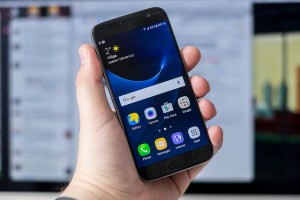By now it should be widely accepted that businesses need both mobile apps and mobile friendly websites so as to be able to operate in the modern business world. Some people may still be tempted to question the need for a mobile app if they already have in place a mobile friendly website. However, if you just sit back and look at the facts, then you will see the logic in this. The truth of things is that we have gone mobile in a big way. People will rarely sit there mobile gadgets down and this has resulted in an increase the number of online purchase.

The modern day business dynamics dictates that you will need to move beyond a mobile-friendly website to attract and retain a reasonable number of customers to your business. | Kārlis Dambrāns (Flikr)
The modern day business dynamics dictates that you will need to move beyond a mobile-friendly website to attract and retain a reasonable number of customers to your business. Your business will have to advance to the level of a mobile dedicated app. A mobile app will let consumers keep in touch with your business though their small screen in the way they are used to keeping in contact with their other favored businesses.
The good news is that many small businesses have already seen light at the end of the tunnel and are therefore developing their mobile apps as the days go by. They have come to realize that app development is a very essential component of their marketing strategy. The rapid development in technology has made things better than before. App developers have an opportunity to come up with apps which have got better features and are easier to use. This has boosted the performance of the mobile apps.
It would however be untrue to claim that mobile apps only benefit small businesses. Large businesses have been able to benefit tremendously from the mobile apps. Research has been done to show the types of small businesses that are making use of the mobile apps. A great percentage of the businesses that make use of mobile apps are in the health and food industry. Hairdressing and automotive industries also take a considerable portion of the circle. Religious organizations, charities, event organizers and legal bodies have equally not been left behind. If you look at almost any industry you can find an example of a business making use of mobile applications to help their business grow.
Given the fact that developing a mobile app is very cost effective, it is within the financial capability of most businesses.
All these should however not lead one to the conclusion that mobile websites should now be forgotten. Mobile web sites are essential to help you be found by new customers. These websites be developed in such a way that they provide more personalized experience, just like a mobile app.




